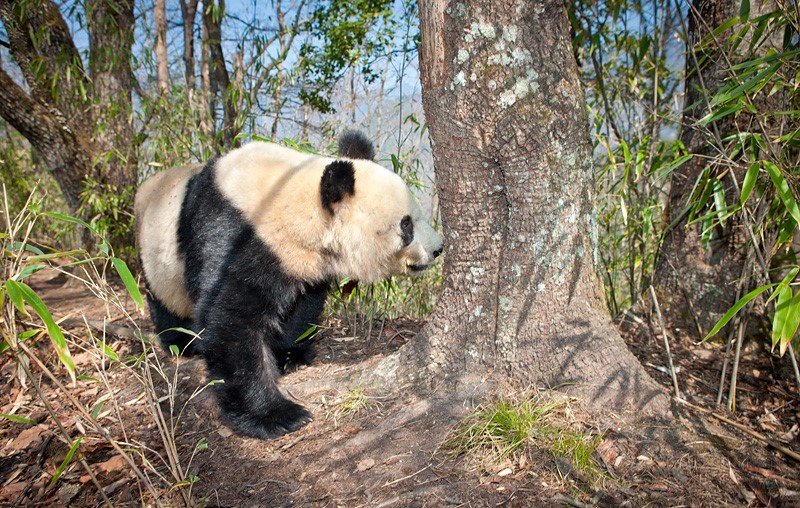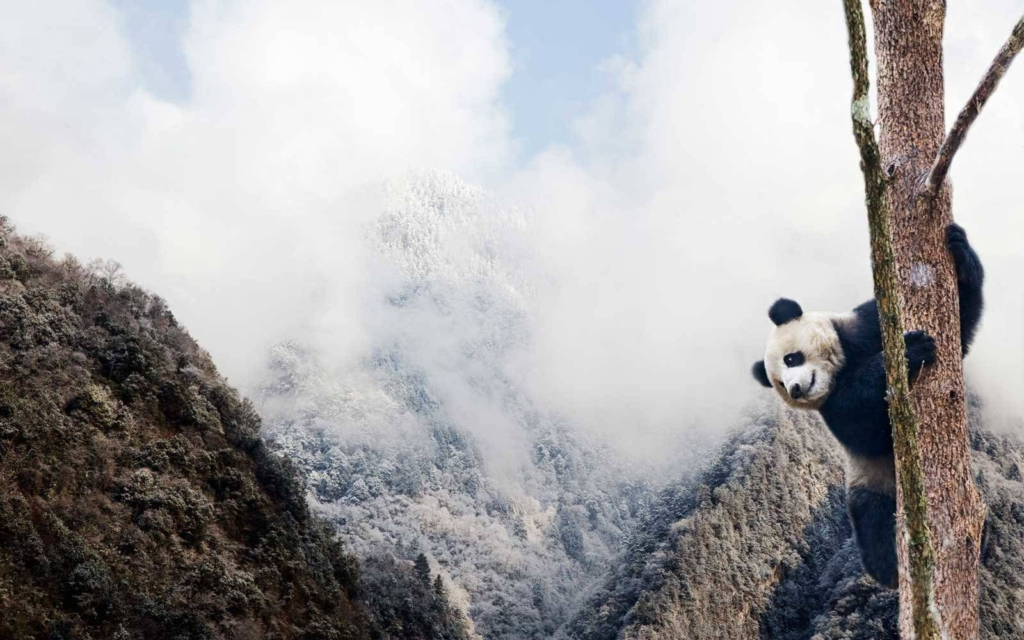Panda’s Origin: Whenever we listen about pandas, we want to see them. But we mostly hear that they can be found in the mountains of China. Then most of us start thinking about why they can be found there, not in other parts of the world. In a similar way, we are also curious to know about them. So, we started to investigate about it and found many reasons that make them live in that place only. If you want to know also, then read the article by keeping scrolling.
Panda’s Origin
Some years back, pandas were found in many areas of the world, such as different parts of China, to be more precise. Unfortunately, due to activities such as deforestation or construction of cities, they lost their natural homes. Today, pandas are seen only in the mountains of China, where they have bamboo on which to feed and an area where they could be safe. We have collected some of the best images of pandas while living in the mountains of China.
#1. Panda Walking Around In The Mountain Area

Giant pandas live in the mountains of China for several logical reasons related to their shelter requirements and historical distribution range, as well as the protection efforts based in China. These are the mountainous areas, especially in Sichuan, Shaanxi, and Gansu provinces, that provide the appropriate conditions that support the pandas. The mountain’s bamboo forests provide a continuous and rich diet, while the environmental conditions of these locations are suitable for pandas to live. That is why they can be mostly seen there.
#2. A Giant Panda Climb A Tree In The Mountains Of China

Earlier, there were more places where pandas could be found. Even in the low-land regions. But due to human interferences such as cutting down trees, deforestation, and practicing agriculture, the habitats of these animals have been significantly reduced. Thus, pandas were forced to move up in the mountains, into the steep country and heavy woodland beyond which man could easily follow. These mountainous areas turned out to be their permanent space because the areas were not developed, and this was the kind of calmness Pandas required.
#3. Looks Like Panda Have No Eyes

In general, pandas are those who prefer to live a peaceful life. These animals prefer to have their own spaces for this reason so that they do not have to struggle with each other for these necessities. Due to the huge size of the area occupied by mountains, the pandas are able to not only create large spaces but also not cross paths with other pandas. This brings less pressure and fight, so they can live peacefully. Therefore, they can find locations where they can live calmly.
#4. Drone View Of Pandas In The Mountains

Another aspect of the life environment is climates, and most mountain areas where pandas are found are cool temperate. These pandas have compact skin and thick brown fur that insulates them in the cold environments of the region where they live. Thus, higher mountains are more suitable for them where temperatures may relatively become cold for them. The climate in these mountain forests consists of misty and rainy conditions. Pandas adapt fairly well to these conditions, and climate is one of the main reasons that pandas prefer mountains.
#5. Baby Panda Spotted While Climbing On A Tree

The mountainous areas have resources in these forests, not only for lack of food but also a place where they can truly hide and build their homes. Bushes and the growth of trees provide one with shelter from its predators and unfavorable conditions. Panda cubs are helpless and rather small when they are born, so the necessity of the shelters that would protect them from predation and provide a safe hideout is important for the very first months of life. The mountain forests for the pandas are natural and thus ideal for young pandas, hence the endurance of the species.
#6. Pandas Has No Fear Of Heights

Breeding strategies have been conducted in these areas mainly because of rare species. Chinese government and IGOs have set up many nature reserves and national parks in these regions. They are specifically created to minimize human impact on such species’ environment so that pandas could be provided with shelter, food, and space to reproduce since their environment is threatened by human destruction of forests. Conservation measures include the restoration of forests and the investigation of further scientific facts about pandas with the purpose of their successful population increases.
#7. There Is Most Of The Time Snow There

Panda conservation in the mountains of China has received support from the community and awareness. Panda conservation awareness is created among local people, and they are advised on the positive behaviors that would not lead to destruction of the pandas’ natural habitat. Thus, the concept of eco-tourism has been a suitable tool to engage local communities in conservation initiatives and empower them economically. The traveler who visits the panda reserves and national park gives a cash value as a result of the expense to conserve the pandas.
#8. Three Pandas Have The Party Time

Finally, it can be concluded that pandas live happily in the mountains of China due to the fact that the climate and surroundings of those areas are most suitable for their existence. This is because there is a lot of bamboo, which is their major diet, the temperate climate, and because the mountains are steep, rocky, and isolated, which makes it difficult for potential predators to gain access to the pandas. Thus, natural and human-related aspects have defined the mountains of China as the primary and most favorable place for pandas.
#9. Pandas Hold The Tree Strongly With Their Paws

It is worth remembering that human activities forced pandas to live in mountains. However, mountains make them comfortable. Those mountains are being preserved so that pandas could inhabit them and develop further there. Mountains of China are this special place that can make the life of a panda joyful and healthy. Therefore, it can be rightly said that it is our duty today to safeguard such rare species. For this, you just get enough knowledge about them by reading our blogs, here and here.
#10. These Mountains Are The Home Of Pandas





